Birds, bugs, and why your backyard is part of The Intertwine
By Lori Hennings, July 17 2013
Well before it gets light, you may have noticed that robin singing. And now, for weeks, he’s been pounding against your kitchen window, depositing powdery feather and eyeball marks. What the heck?
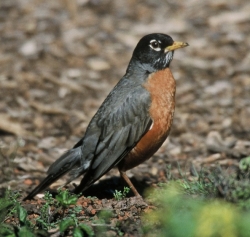
As it turns out, the bigger a bird’s eyeballs, the earlier he sings, possibly because he sees first light. And Mr. Robin has pretty big eyeballs. The window marks are due to hormones; high spring testosterone triggers territorial aggression, making Mr. Robin go after that good-looking “rival” reflected in the glass. Hormones also trigger birds to sing, grow new feathers and migrate seasonally to follow food sources.
Yes, hormones make the world go ‘round, and we should be glad that hopped-up robin wants to claim space here in The Intertwine. From native song sparrows, bushtits, Bewick’s wrens, scrub jays, goldfinches, downy woodpeckers, flickers, spotted towhees and robins, the birds in our yards keep bugs in check, pollinate our plants, spread seeds and provide our most visible contact with wildlife. Studies show that contact with nature calms us and helps our brains work better. With their beauty and curious behavior, our avian allies are nature at its finest.
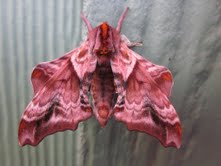
So how do we encourage Mr. Robin to stick around? You could start by planting a native shrub. As it turns out, native birds like native bugs, and native bugs are adapted to feed on native shrubs. That explains why native shrubs aren’t usually invasive. In Europe, Oregon grape is invasive because it has no natural predators. Here, bugs are constantly keeping Oregon grape in check by eating about 15% of the plant--which actually helps the plant, by spreading pollen.
Once you’ve established that native shrub, consider planting a few more, such as red-flowering currant, Indian plum, salmonberry, salal and ocean spray. These natives provide flowers and fruit over a long season, and some, like Ocean spray, host caterpillars -- basically slow-moving Big Macs for a hungry songbird.
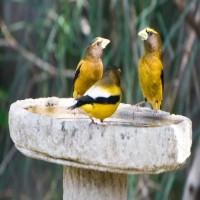
Got plants? Next, think about a water feature -- a simple bird bath where birds can refresh. Just keep it shallow enough that small birds won’t drown and, if cats visit your yard (I keep mine inside) place it away from heavy vegetation so birds can see what’s coming.
Now, think about your entire yard. Strategic plantings not only cool temperatures for those hot-day backyard barbecues, but can form a nice patch of habitat. Birds are now teeming, even breeding, in the part of my backyard where I replaced lawn with native shrubs. I never water or fertilize, and intentionally leave this patch messy, because towhees need leaf litter and birds love brushpiles. It's our own little piece of woods, and also helps protect the stream behind our house. After all, my yard is part of The Intertwine (and yours is, too).
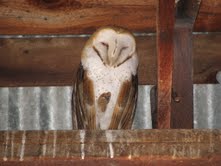
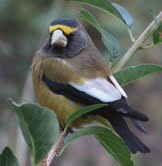

Next, let’s train our binoculars on the neighborhood. Are you near an Intertwine greenspace? Greenspaces often serve as both wildlife habitat and movement corridors. Most birds within The Intertwine migrate; if they are stuck here all year, they won’t make it. The broader the greenspace, the more animals (and native plants) can move along the corridor. With the right plants -- or even a good line of street trees or shrubs -- your backyard can effectively widen the corridor, and all of the sudden you’re helping a LOT more birds.
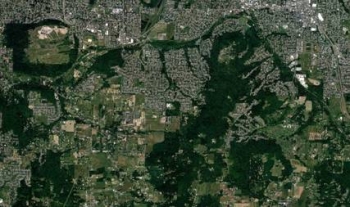
Over the past several years, Alliance partners have been working to map The Intertwine’s wildlife corridors. While that work is not yet finished, be assured that your yard can be part of that network. Before too long, Friends of Trees and the Backyard Habitat Certification Program (courtesy of Columbia Land Trust and Audubon) can help you figure out strategic places to encourage plantings, even in our most urban areas. At the scale of The Intertwine, every single tree and shrub helps pollinators and birds -- to nest, rest, feast on Big Mac caterpillars, and remind us, like noisy Mr. Robin, that another dawn approaches.


 Lori Hennings is a senior natural resource scientist for
Lori Hennings is a senior natural resource scientist for
Add new comment